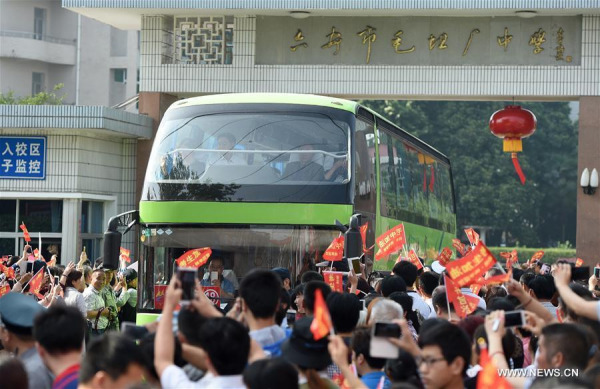
Maotanchang high school in Lu'an city, East China's Anhui province, has hit the headlines again before this year's national college entrance exam (gaokao), which falls on Tuesday and Wednesday. The school has earned a reputation as a "gaokao mill" as it has produced a great number of students who have passed the exam. Beijing Youth Daily commented on Monday:
Thanks to the impressive performance of its students in previous national college entrance exams, Maotanchang High School has arguably become "the world's largest gaokao mill" in many people's eyes, regardless of the fact it is located in a little-known township in Anhui province.
Although such a title also reflects widespread public complaints about the country's exam-oriented education that does not bother the Maotanchang students and their parents, because they truly believe that passing the exam is the only way to success.
The truth is, these students are willing to do whatever it takes to get decent gaokao scores to receive higher education, as an overhaul of the national exam system is yet to happen and they are not able to bypass the exams by studying overseas.
Many criticize the prevailing mentality that a youngster's future rests on his/her performance in the national exams. But they remain skeptical of any reforms designed to replace the exam, including independent recruitment by universities, fearing that they might easily be manipulated.
In other words, the longevity of public concerns over the fairness of the exams has a lot to do with people's obsession with quality educational resources, which are always relatively scarce and in high demand.
Admittedly, the applicants for the college entrance exams, whose number has been on the decline since 2008, do not have to go to great lengths to get a college admission, as about 74.3 percent of them are granted access to higher education. The number was just over 5 percent four decades ago.
However, this is unlikely to bridge the income gap between urban and rural areas, where educational resources can vary sharply, meaning that a lot of students still have to resort to the exam-focused training to enter leading universities.


















































